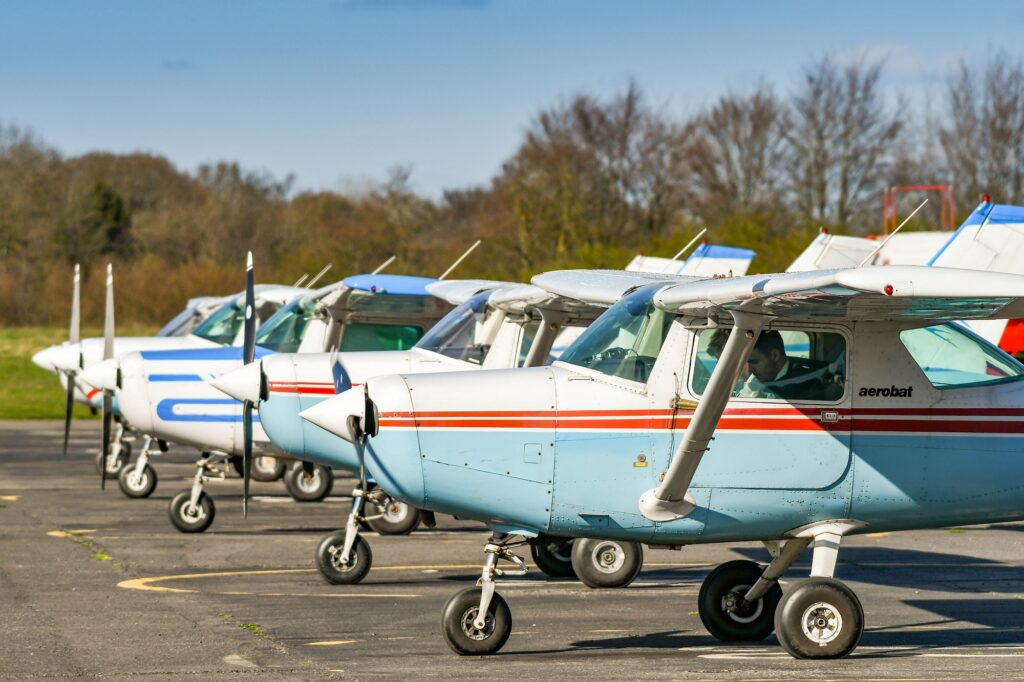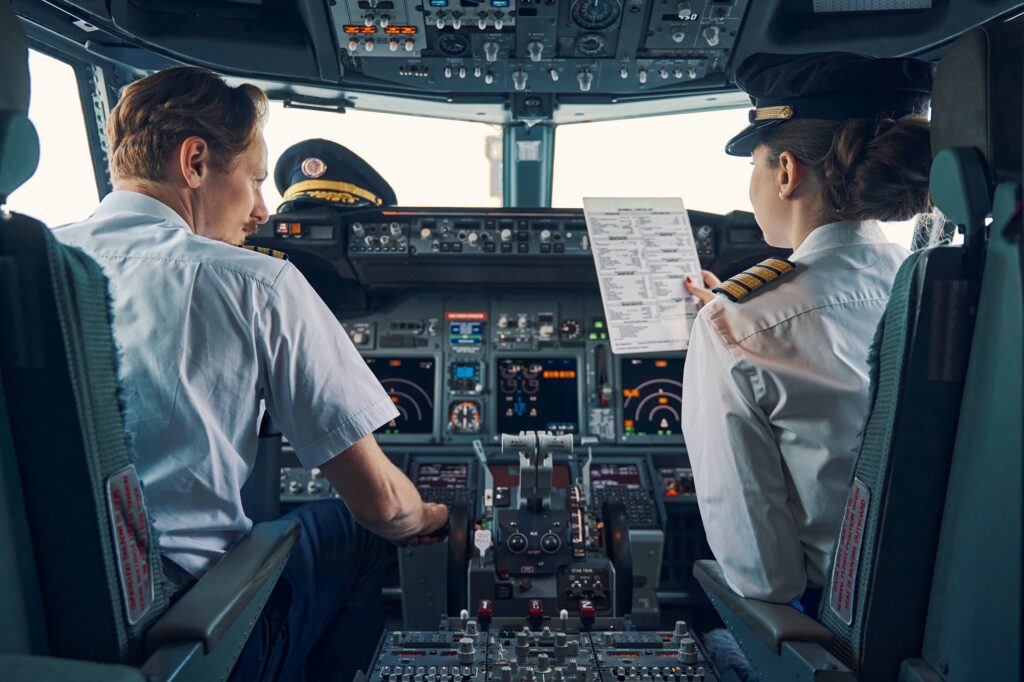Training to become a pilot and flying your own jet is one of the enduring ambitions that capture the hearts of many people across the globe.
Along with becoming an astronaut, training to be a doctor or living the life of a billionaire, flying a plane for a living is a dream job.
It’s not hard to understand why either, with the chance to fly around the world and earn a living doing something that only a tiny percentage of the population will ever have the opportunity to do.
There are thought to be around 225,000 commercial pilots in the world, with the Federal Aviation Authority (FAA) reporting 100,000 in the United States (US) alone.
Pilot’s salaries are another attraction, with the very best commercial pilots earning six-figure salaries and even low-cost carriers offering incomes well above the national average wage.
And airlines are falling over each other to tempt trained pilots to join them, with signing on fees and bumper pay packets.
There really is no better time to be a pilot, but just how difficult is it to become one?
Is the opportunity to become a pilot open to everyone? Or do you have to be a mathematical wizard and have the famed 20/20 vision?
AeroTime takes a look at the training requirements in the United Kingdom to discover what is needed to fly for a living.
Private Pilot Licence

The Civil Aviation Authority (CAA) is the statutory corporation which oversees and regulates all aspects of civil aviation in the UK.
Despite what most people think, you do not need to have achieved amazing grades at school or university to become a pilot in the UK.
However, the first thing you are going to need is a Private Pilot Licence (PPL) and it is also highly recommended you undergo a medical examination before going through any training
Without a medical certificate you will not be able to validate your pilot’s license, no matter how good you are.
To gain a pilot license in the UK prospective candidates will need to pass written and practical exams at a flight school.
According to the CAA, “as the level of the licence gets higher the tests and checks become harder and the medical becomes more stringent”.
Pilots can eventually add more skills and abilities to their licence such as an instrument rating allowing them to fly in cloud and low visibility.
Licenses fall into two categories, ‘Part 21 aircraft’ and ‘non-Part 21 aircraft’.
Part 21 aircraft are types you will see around flying schools such as the Cessna C172, the Piper PA-28, Diamond DA40 and Robinson R44.
According to Flynqy Pilot Training, a flight school in the UK, to obtain the PPL you must complete a minimum of 45 hours flight training.
This must include at least 25 hours of dual flight with an instructor and 10 hours of supervised solo flying time.
You are also required to pass nine theoretical examinations, all of which are multiple choice with a 75% pass mark.
The subjects include air law, operational procedures, human performance and limitations, navigation, meteorology, aircraft general knowledge, principles of flight, flight performance and planning, and communications.
You will also need to complete the Radiotelephony Practical Examination, so you are licensed to speak with air traffic controllers.
Stepping up to commercial training
To become a commercial pilot and to fly aircraft with nine or more passenger seats, you will need to train for an Airline Transport Pilot Licence (ATPL) from the CAA.
The minimum age to get an ATPL is 21 years old, allowing you to act as pilot in command (PIC) of aircraft flown for commercial air transport operations.
According to the CAA you will need to already hold a Multi-Crew Pilot Licence (MPL) or have a Commerical Pilot Licence (CPL).
When taking this next step in your career it is likely that a flight school will want to see strong passes in mathematics, science, and English.
A lot of the flight schools have their own examinations and aptitude tests to ensure you have the right skills and mindset to reach the elite levels.
According to the UK jobs website, Prospect, there are typically three types of professional flight training – integrated, modular, and multi-crew pilot licence (MPL).
The integrated training allows students with no training to gain their ATPL within 18 months, but the course is very intensive.
The modular model allows you to work while you train and requires students to already have their PPL.
The MPL is an airline-specific qualification, which allows you to operate for a certain airline.
In the UK pilot training costs between £70,000 and £130,000, but once you get your ATPL you will be able to join an airline.
Although flight schools take different approaches in their training, most courses last between 18 months and two years.
At CAE, courses start with theoretical knowledge training, and this will often involve both virtual and practical lessons.
Phase two is single engine flight training which involves flying solo in an aircraft. Students also complete their Commercial Pilot Licence (CPL) skill test.
In phase three of the course students learn how to fly using instruments on a multi-engine piston aircraft. They will also perform the Multi-Engine Instrument Rating (MEIR) test and the Advanced Upset Prevention and Recovery Training (A-UPRT).
Finally, students obtain their Airline Pilot Standards Multi Crew Cooperation (APS MCC) and learn how to fly as a member of a professional airline cockpit crew.
Other paths to becoming a pilot
Some airlines have integrated their training into specific flight schools such as Ryanair which is partnered with Atlantic Flight Training Academy in Cork, Ireland.
While British Airways does not currently have a ‘Cadet Programme’, the airline welcomes integrated and modular students to apply for the Newly Qualified Pilot Pathway (NQPP).
Some universities in the UK offer degrees alongside pilot training which could give graduates an edge over their rivals.
According to Prospects, Bucks New University offers the BSc Aviation Management with Pilot Training, while Kingston University London runs the BSc Aviation Operations with Commercial Pilot Training.
A disadvantage of this option is that you will still need to pay university fees as well as the eye-watering pilot training costs.
However, this route would give you something to fall back on as your career develops.
Pilot medical examinations
Pilot medical examinations are a key part of becoming a pilot and are one of the most intriguing parts of learning to fly.
Over the years myths about piloting have continued to circulate such as you can’t wear glasses or contact lenses.
In fact, according to the CAA the standard vision requirements allow pilots to wear glasses or contact lenses.
Asthma is also not an issue as long as it can be controlled, but additional tests may need to be taken.
High blood pressure should also not dissuade you from seeking a career as a pilot, according to the CAA regulations, which mean modern medicine can be used to control the condition.
Medical examinations are carried out at an Aeromedical Centre and may take up to four hours to complete.
The examination includes medical history, eyesight, physical examination, ectrocardiogram (ECG), lung function test, hemoglobin blood test and urine test.
A Class 1 medical certificate is valid for 12 months, unless you are 40 or over and carry out single pilot commercial air transport operations carrying passengers; or you are over 60. In both cases, it is six months.
A UK Class 1 medical UK medical certificate is required in order to train for a CPL or an ATPL, and your licenses are not valid without one.
The future pilot generations
The difficulty of becoming a pilot is not about landing planes; in fact, the true hardship comes from the dedication required to train and sit multiple challenging tests over many years.
Of course, pilots have to be bright with a strong grasp of numbers, plus an understanding of physics helps.
However, misconceptions about what it takes to be a pilot are not helping the industry in finding the next generation of captains.
In the UK trainee pilots need good exam results from school, but there is no prerequisite to have a university degree.
Even if you failed your exams at school, with the right aptitude, evening education or adult learning could give you the qualifications you need for pilot training.
Perhaps the most difficult part of becoming a commercial pilot is how much it costs to train, which can easily hit six-figures.
While a career as a pilot will certainly help to pay back the loans, it is not a career you want to pursue without a genuine passion for the industry.
Sadly though, many will quit before they have even started, finding the idea of being saddled with so much debt at a young age far too difficult to stomach.

